Blog | 5-minute Read
Choosing the right SIEM: Microsoft Sentinel vs Splunk vs QRadar

Jack Fisher
Threat Detection Engineer
Published: 30 September 2025
In this article we take a look at three of the leading Security Information and Event Management (SIEM) systems: Microsoft Sentinel, Splunk, and IBM’s QRadar. And why Microsoft-first organisations increasingly see Sentinel as the most natural fit.
As a Microsoft partner it’s no surprise that we advocate for Sentinel as a SIEM of choice. But that’s not a slight on products like QRadar or Splunk. All three are rightly billed as leading lights in an increasingly crowded market, and each is more than capable.
Capability alone, however, is no longer the measure of a SIEM. Faster threats, AI-driven attacks, tighter budgets, and leaner teams mean organisations need platforms that fit their architecture, operating model, and investment strategy.
That shift is clear across the market. Splunk is adapting under Cisco ownership with new workload-based pricing. IBM has extended QRadar beyond its appliance roots with cloud-native and AI features. Microsoft is unifying Sentinel into the Defender portal and addressing retention costs with its new Data Lake tier.
The question for any security leader is how these evolutions align with your technology stack and the way your organisation is tackling today’s challenges. And for Microsoft-first environments, Sentinel increasingly proves to be the most natural fit.
Architecture and deployment models
Splunk has always been about flexibility. It runs on-premises, in private cloud, or as Splunk Cloud, giving it reach across heterogeneous estates. QRadar retains its appliance-based heritage but now offers hybrid and cloud options. Both approaches appeal to organisations that want direct control over infrastructure.
Sentinel is a cloud-first SIEM, born in Azure, and scales elastically without capacity planning or hardware management. More importantly, it’s evolving into the Defender portal, where SIEM and Extended Detection and Response (XDR) converge.
As we’ve discussed before, this is a major shift towards the unified security operations needed for modern defence. It gives analysts a single incident queue, a unified workflow, and context drawn from across identities, endpoints, and cloud services.
In practice, this tackles the three challenges CISOs cite most often:
For Microsoft-first organisations, the appeal is how closely this model reflects day-to-day reality. It builds on familiar tools, removes much of the overhead that slows response, and aligns with the operational and commercial pressures security teams face.
With Microsoft 365, Teams, SharePoint, and Entra ID already in use across hundreds of thousands of organisations and over 400 million individuals worldwide, a SIEM that connects to these sources natively ensures critical telemetry is available immediately, without added integration or cost.

Free Guide
The Complete Guide to Microsoft Sentinel and Defender XDR
Every tool reviewed. Real-world ransomware attack use case!
Discover how advanced AI and machine learning:
- Deliver complete visibility and threat detection
- Respond rapidly to stop attacks before they escalate
- Increase efficiency and lower operational costs
- Deliver accurate, real-time intelligence
Integration and ecosystem alignment
Splunk built its reputation as the “Swiss Army knife” of SIEMs, able to ingest almost any data source with the right add-ons and parsers. QRadar is valued for its ability to correlate across diverse log types and for its close integration with IBM’s wider security stack.
Sentinel takes a more native path. For organisations using Microsoft 365, Entra ID, and Defender, it delivers out-of-the-box integration with no extra connectors. Microsoft logs flow in directly, and Defender incidents appear in the same queue as Sentinel alerts.
Given how widely Microsoft platforms underpin UK business operations, this alignment reduces friction. The telemetry most critical to day-to-day security is available immediately, without additional overhead.
At the same time, Sentinel includes more than 300 connectors for third-party platforms such as firewalls, SaaS applications, and other clouds like AWS. Data from Palo Alto, Okta, or ServiceNow can be analysed alongside Microsoft-native signals in a single workflow.
For Microsoft-centric estates, this balance of deep native integration and broad third-party coverage supports a move toward genuinely unified visibility across the technology stack.
Detection accuracy and AI/ML capabilities
For the challenges already highlighted, detection accuracy is now the defining test of a SIEM. Platforms need to cut noise, surface real threats quickly, and support investigation without adding overhead. And, of course, all three SIEMs here have adapted to meet this challenge.
Splunk delivers powerful correlation through its SPL language and Machine Learning Toolkit, with UBA available for anomaly detection.
QRadar’s strength lies in its mature correlation rules and offence engine, with user behaviour analytics embedded for organisations running structured security operations centre (SOC) processes.
As for Sentinel, it draws on Microsoft’s vast global telemetry and AI research. The Fusion engine correlates low-level signals into high-confidence alerts. User and Entity Behaviour Analytics (UEBA) profiles user and device activity to flag anomalies. By adding Microsoft Security Copilot you can extend generative AI directly into the analyst workflow, enabling faster triage, investigation, and hunting in natural language.
This is the reason Forrester’s 2025 Wave ranked Microsoft highest for detection engineering, AI integration, and roadmap innovation. Organisations using Sentinel alongside Defender XDR report alert volumes cut by half, giving lean teams the focus they need to respond effectively.

Microsoft was ranked highest for detection engineering, AI integration, and roadmap innovation.
Licensing, cost, and total cost of ownership
Licensing models often shape SIEM decisions as much as features. Rising data volumes and closer budget scrutiny mean cost predictability and alignment with existing investments are critical.
Splunk’s ingest- and workload-based pricing reflects its flexibility but can be challenging in data-heavy environments. QRadar’s EPS and flow licensing is predictable for steady workloads but less elastic when scaling.
Sentinel follows a consumption model: organisations pay per GB ingested, with free ingestion for key Microsoft sources such as Microsoft 365 and Entra ID.
Discounts are available for reserved capacity, and in 2025 Microsoft added a Sentinel Data Lake tier that enables long-term log storage at up to 85% lower cost than analytics-tier storage.
Forrester’s Total Economic Impact study found organisations achieved a 234% ROI and 44% cost reduction by moving from legacy SIEM to Sentinel. For Microsoft E5 customers, leveraging existing entitlements makes the economics even stronger.

Microsoft Sentinel users achieved 234% ROI over 3 years.
Operational complexity and skills overhead
The effectiveness of any SIEM depends not only on features but also on how easily teams can run it day to day.
Splunk is powerful but demands specialist knowledge. Its SPL language and infrastructure management requirements often mean dedicated engineers are needed to keep it optimised.
QRadar also requires regular tuning and administration, with many organisations relying on experienced QRadar specialists to maintain rules and correlation logic.
Microsoft Sentinel uses Kusto Query Language (KQL), making it easier to adopt for teams already working in Azure. Furthermore, as a cloud service, it removes the need to run infrastructure and is continuously updated by Microsoft without upgrade projects.
For smaller or lean teams, this level of automation and integration makes Sentinel more achievable without adding headcount. For larger teams, it reduces operational overhead and allows analysts to focus on investigation and response rather than system maintenance.
Conclusion: Why Sentinel makes sense for Microsoft estates
Splunk, QRadar, and Sentinel are all proven SIEM platforms. Each has strengths: Splunk for heterogeneous mega-scale environments, QRadar for regulated industries with on-prem mandates.
But for organisations standardised on Microsoft 365, Azure, and Defender, Sentinel is the clear choice. It integrates natively, reduces cost by leveraging existing investment, and delivers AI-driven innovation in ways competitors are still building towards. The shift into the Defender portal and the introduction of the Data Lake show Microsoft is setting the pace for SIEM evolution.
A platform alone will not deliver outcomes. The organisations getting the most from Sentinel are those who operationalise it: tuning analytics, automating playbooks, and ensuring round-the-clock coverage. That requires expertise. For many, partnering with a specialist provider is the difference between owning a licence and achieving measurable resilience.
For Microsoft-centric enterprises, Sentinel is more than another SIEM option. It is a strategic foundation for building a modern, AI-powered security operation.
Questions for selecting your SIEM
-
All three are established SIEM platforms. Splunk is often chosen for its flexibility across heterogeneous estates, QRadar is trusted especially in IBM-first environments and regulated sectors, and Sentinel for its cloud-native design and integration with the Microsoft ecosystem.
-
No. Sentinel provides native ingestion from Microsoft 365, Azure AD, and Defender at no extra cost, but it also includes more than 300 connectors for third-party sources such as firewalls, SaaS platforms, and other cloud providers like AWS.
-
Splunk typically uses ingest- or workload-based pricing, QRadar relies on EPS and flow-based licensing, while Sentinel follows a cloud consumption model. Sentinel’s inclusion of free Microsoft log ingestion and its new Data Lake tier for low-cost retention make it attractive for organisations already invested in Microsoft licensing.
-
QRadar has a strong heritage in compliance-heavy sectors and remains widely used in those contexts. However, Microsoft Sentinel also provides pre-configured compliance workbooks (e.g. ISO 27001, PCI DSS, NIS2) and regional hosting options through Azure, making it increasingly relevant for organisations needing evidence-grade reporting. Coupled to its versatility, Microsoft-native integrations and its expanding unified SIEM/ XDR capabilities, make it a powerful choice for proving compliance aligned to protection.
-
AI and machine learning are now central to SIEM performance. Splunk offers an ML toolkit, QRadar has embedded user behaviour analytics, and Sentinel combines Microsoft’s Fusion ML engine, UEBA, and Security Copilot for generative AI-driven investigation support. This helps reduce noise and accelerate response.
If you’re looking to optimise your Sentinel investment and unlock the full power of unified security operations in your organisation, arrange a call to speak with our consultants today.


Free Guide
The Complete Guide to Microsoft Sentinel and Defender XDR
Every tool reviewed. Real-world ransomware attack use case!
Discover how advanced AI and machine learning:
- Deliver complete visibility and threat detection
- Respond rapidly to stop attacks before they escalate
- Increase efficiency and lower operational costs
- Deliver accurate, real-time intelligence
Next steps
Like this? Don’t forget to share.

Great emails start here
Sign up for free resources and exclusive invites
Subscribe to the Kocho mailing list if you want:
- Demos of the latest Microsoft tech
- Invites to exclusive events and webinars
- Resources that make your job easier

Don't Miss
Great Microsoft Sentinel resources

Cybersecurity a year in review: What happened in 2025, and what it means for your 2026 security strategy

How to achieve cost-effective threat visibility with Microsoft Sentinel data lake

Turn your people from phishing fodder to the first line of defence

Choosing the right SIEM: Microsoft Sentinel vs Splunk vs QRadar
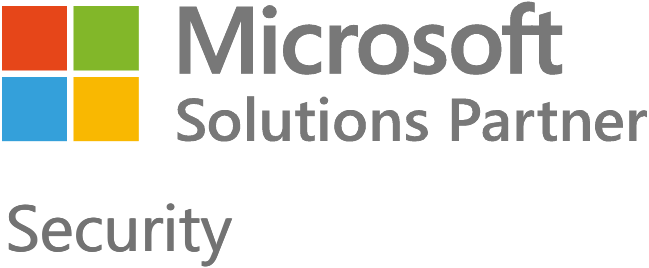
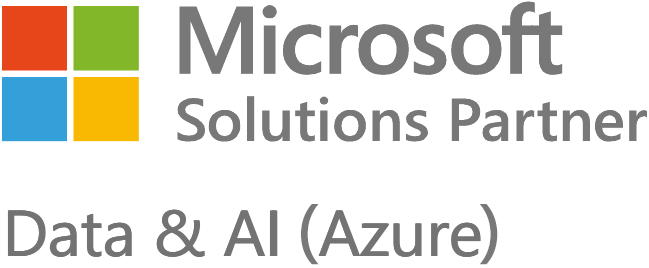
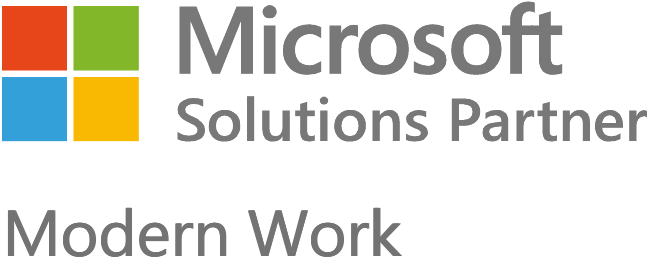
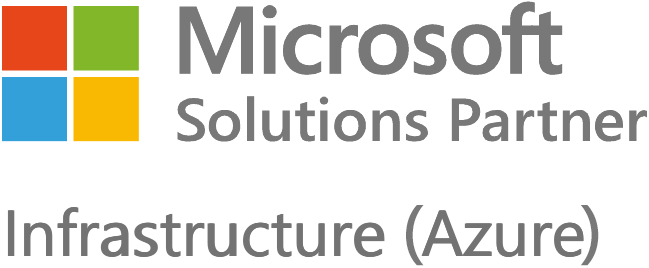

















Got a question? Need more information?
Our expert team is here to help.


